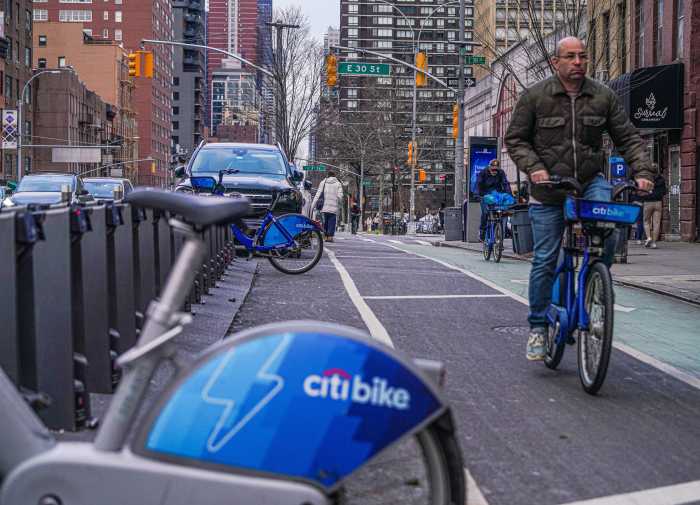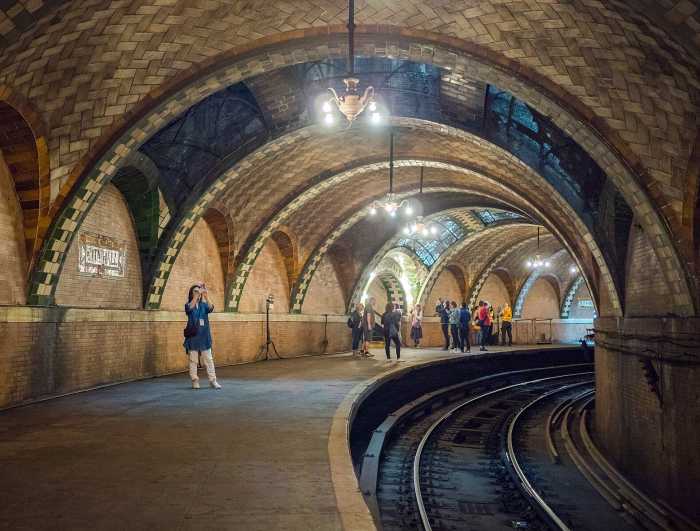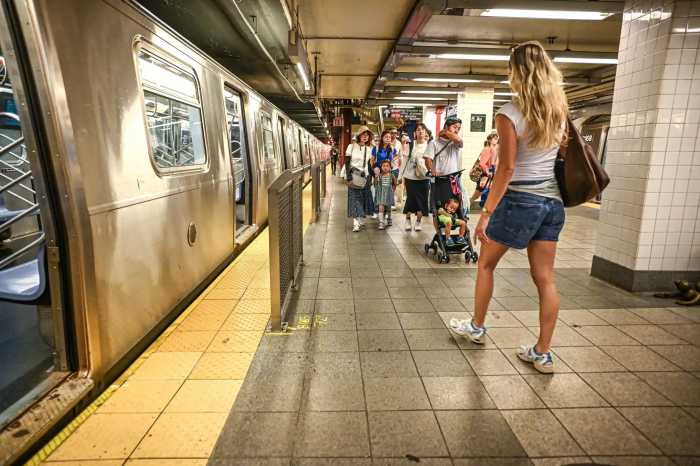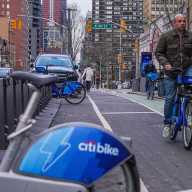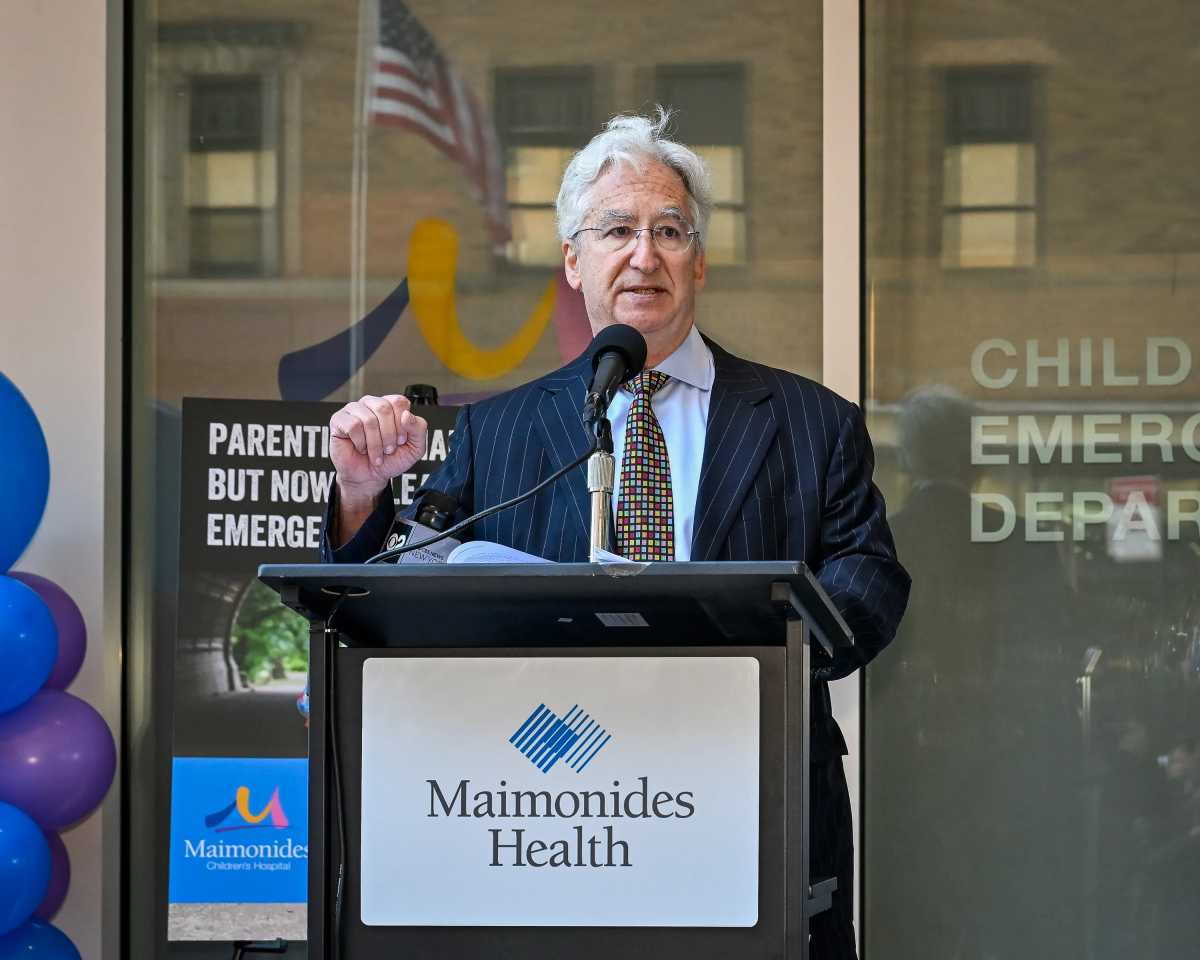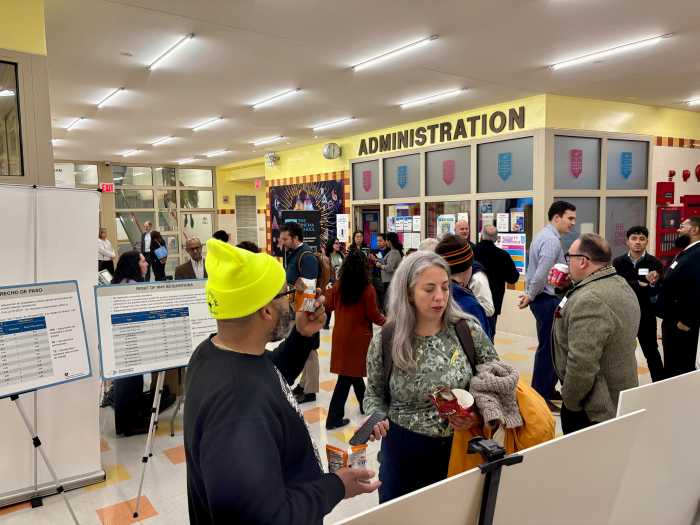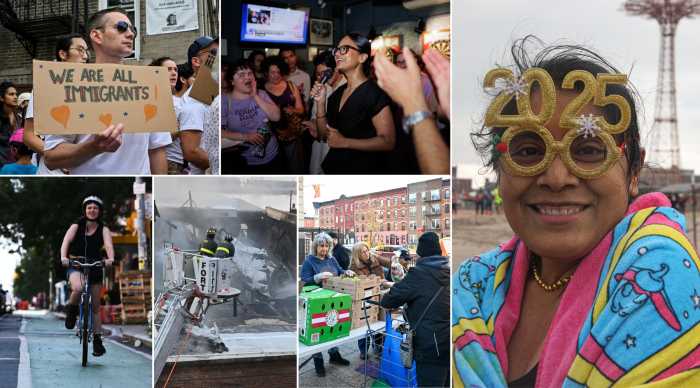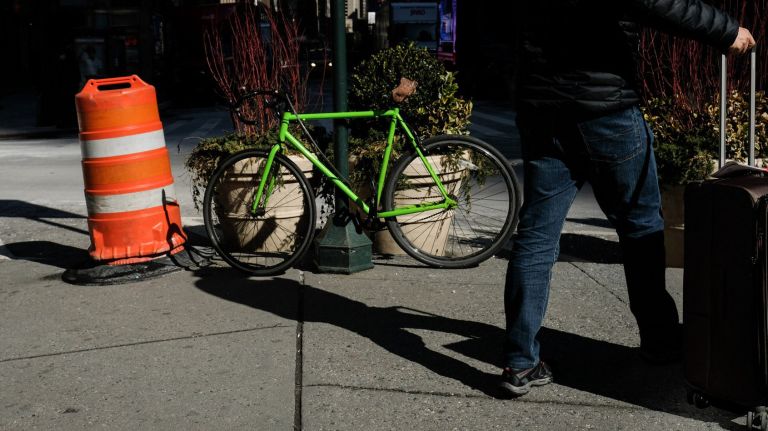
On any given street in Manhattan, pedestrians navigate bicycles parked to sign posts, scaffolding and fencing.
The MTA and private landowners post signs warning bikers against locking up on their property. As more and more people cycle in the city, riders say they are vying for a limited number of legitimate places to park their bikes.
“I’ve resorted to just taking a risk and putting my bike up against a coffee shop or something — even if I have my lock, because you can waste so much time looking for a place to park,” said Luke McCann, a promoter from Hell’s Kitchen, after biking through midtown. “It’s not like in Amsterdam or somewhere where there are bike parking garages.”
As cycling has grown more common in New York City, the de Blasio administration has decreased the pace at which it adds racks — despite setting out to increase the installation rate. The city set up an average of 1,633 new bicycle racks over the last four fiscal years under Mayor Bill de Blasio, according to figures in the Mayor’s Management Report. That is 42 percent less than the average of 2,808 racks per year during the previous four fiscal years — a period that predominantly fell under former Mayor Michael Bloomberg’s tenure, the reports show.
Meanwhile the city has seen a 70-percent growth in daily cycling between 2011 and 2016, from 270,000 daily trips to 460,000 daily trips, according to the most recent city data.
Bike parking is “essential infrastructure” if the city wants to treat cycling as a real transportation option, according to Jon Orcutt, a spokesman for Bike New York who worked as the city’s Department of Transportation policy director under Bloomberg.
“Everybody’s talking about Citi Bikes and scooters, but it’s the humble bike rack that needs more attention,” Orcutt said. “We ought to have a big installation of these around every subway stop, and we don’t; we have them at a few. That’s one of the ways to get people out of cars — is to make cycling a way to get to transit easily and to make it not a hassle to park your bike.”
A lack of legitimate parking can also cost bikers their rides. Rose Uscianowski, the Staten Island organizer at the advocacy group Transportation Alternatives, had her bike stolen after locking it to scaffolding. She said a thief disassembled the scaffolding and slid her bike off.
“I came out of my office and found a bar of scaffolding on the floor and my bike missing,” Uscianowski said. “The only reason I locked to scaffolding was because there are only a few racks on John Street, and they’re always taken up.”
On Staten Island, Uscianowski said it is difficult to bank on finding a rack near her common destinations. So she has resorted to checking the city’s official map of racks ahead of pedaling.
Doug Gordon, a Brooklyn activist, said he requested that the city place a rack outside of his apartment in 2014, and he is still waiting for one. Generally, he said it does not seem that the city is “taking [bike parking] seriously as a priority.”
“It doesn’t require work or engineering to install a bike rack,” said Gordon. “And the benefit of it is a very visible sign that your city is doing something for people who bike and to encourage cycling.”
The city has installed 22,287 bike racks since 2006, according to city data, which averages out to about 1,714 each fiscal year. The de Blasio administration has set a goal to add 1,500 racks a year and has hit that goal twice in the last four fiscal years.
The city has shifting some of its focus to maintaining and replacing its current racks, according to a city spokesman. The government is also putting more effort into checking for abandoned bicycles — a separate, ongoing issue that limits options for riders and clutters city sidewalks, the spokesman said.
“DOT is focusing installation efforts on corridors and districts to achieve higher quality, coordinated street furniture layouts and to better track and maintain all of the assets on our sidewalks,” the spokesman said in a statement. “This strategy, which is less request-based than in the past, also includes improved outreach, reduces the time it takes to fulfill requests and better utilizes internal and external resources.”
The city is on track to hit its 1,500-rack target this fiscal year, which ends on June 30, the DOT spokesman said. But Orcutt called that milestone a “disproportionately low goal” for the number of bike trips on the city’s 6,000 miles of street.
“We’d also be happier,” Orcutt said, “if DOT acknowledged that bike parking is essential to bike transportation alongside its concern for ‘high quality street furniture layouts.’”



